Getting to the bottom of WW1 tunnels
ScanningDuring World War I, 120,000 New Zealanders were sent overseas. Of those, none were more critical to the war effort than the tough miners, quarrymen, and labourers of the New Zealand Engineers Tunnelling Company (NZETC).
The men of the NZTEC were recruited for a specific mission: To create a network of tunnels between a series of abandoned quarries in Arras, France. The result would be a 2.3km-long subterranean passage through which allied soldiers could move safely during a planned assault.
The work played a crucial role in the subsequent battle. But their efforts have been largely forgotten. So when researchers Pascal Sirguey and Richard Hemi, from New Zealand’s National School of Surveying at the University of Otago, stumbled onto their story, they vowed to preserve what remained of their countrymen’s work.
Sirguey and Hemi devised a project, LiDARRAS, which would use lidar technology to capture a digital record of the tunnel network, one that they could use to honour the men during the World War I centennial. It was a big task. They would have to survey and scan what remained of the tunnels, and then create 3D models and a virtual environment of the caverns. And it all needed to be completed in just two years.
The two scholars had used scanning technology on other projects. So after talking with a scanning expert, they chose the Trimble TX8 3D laser scanner to help with their ambitious goals.
From the beginning, Siguey and Hemi envisioned LiDARRAS as a bicultural project. They formed a team of five students from universities in New Zealand and France.
The LiDARRAS Solution
The WWI-era tunnels in Arras, France are awe-inspiring. Large enough to accommodate 24,000 men, they contain a light rail system, a hospital, electric lights, kitchens, running water and living quarters. To quickly and accurately capture them, the researchers and their students chose the Trimble TX8 scanner, which enabled them to:
- Collect one million points per second
- Produce 3D coordinates with millimetre precision
- Capture high-density colour photographic data for realistic texturing of a 3D model
- Use Trimble RealWorks software to create high-resolution photorealistic models, even in the dim light of the tunnels
Each day, the students would begin scanning in one quarry and progress to the end of another. Thanks to the lightning-fast TX8 scanner and its DSLR camera capabilities, they completed up to 63 scans per day and captured dozens of high-resolution photos to colorise the point clouds.
“The speed of the scanner was phenomenal,” Sirguey said.
Over the course of LiDARRAS, the team completed nearly 1000 scans and collected about 100 billion points, making it one of the larger scanning projects processed in New Zealand. The final point cloud features about 25 billion points.
In addition to the scans, the students captured 9768 photos, which they processed into 814 panoramas. They also surveyed a georeferenced network of 32 control marks, including outside and underground marks, using static GNSS and total stations. The team processed its data in Trimble RealWorks software.
Shortly before the project was completed, the students and researchers were invited to attend the remembrance ceremony of the Battle of Arras. There, they shared details of their work and unveiled an animation of the underground network. The team also generated a fly-through inside the 3D point cloud, to demonstrate the full extent of the completed survey.
“LiDARRAS went beyond what we ever expected. The data and imagery was excellent, and we had everything documented and turned over to the city of Arras in time for the anniversary. But beyond its technical and historical merits for the general public, the project offered a unique opportunity to preserve a piece of history, Sirguey said.
Following the presentation at the ceremony, a regional agency conducting an inventory of tunnels in northern France approached Sirguey about the work at Arras. The agency asked for assistance in producing a “light” resampled version of the point cloud, as well as a footprint of the area scanned, to be added to its inventory.
“This is precisely the outcome we anticipated,” Sirguey said. “It’s pleasing to see how the project is contributing to other projects already.”
To learn more about the scanning solution click here

